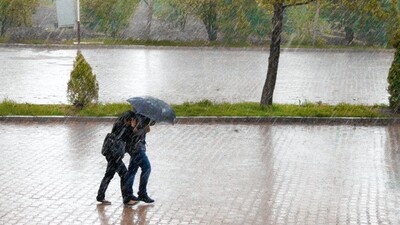Whether you’ve been having problems with surface water or perhaps you’ve bought a new property and want to know what’s what, this blog post aims to give you a good overview of what surface water drainage is, and who is responsible for surface water drainage in the UK. We’ve thrown in a few extra tips for good measure to make sure you know how to identify a surface water drainage system, how to keep your drainage solution in good working order, the differences between surface and foul water and the risks of not having the appropriate drainage. If you have any questions about surface water drainage that we’ve not covered, feel free to get in contact with a member of our team.
What is surface water drainage?
We find the best place to start is right at the beginning. To understand surface water drainage, you’ll need to know precisely what you’re looking for. So, surface water, as you may have already guessed, is rainwater (or melted snow) that lands on your property runs off the roof and down the guttering. The drainage aspect is introduced as this water would otherwise flood the area around your house. Drains and gullies collect the surface water and this then either flows into a soakaway (whereby the water is taken away from the house, into a septic tank and distributed where it can soak into the gravel and soil), or in many cases, straight into a public sewer system.
How to recognise my property’s surface water drainage system
How do I know where my surface water drains to?
The easiest way to find out where your surface water drains to is to look along the guttering and follow it around the house until you see a pipe that comes down the side of the house and goes directly into the ground. This will indicate that the house is connected directly to a surface water drainage system which will drain to a local stream or river. If you don’t have this, then take a look at the surrounding land around your house – does your lawn have a slightly sunken area around five to eight metres from the property? You can follow the rainwater downpipes from the house to see where they go to as a clue to a soakaway system. Soakaways can be hard to spot though, so if you’re having difficulty, you should book a drain survey with a professional to find out where and how the surface water is draining. Another way you can find out is by looking at your property’s title deeds or the original planning application.
What if I don’t have a surface water drainage solution?
For those living in hot countries that don’t experience much rainfall, a water drainage solution might not be as necessary as it is in the UK. In the UK in 2019, we received 1,392 millimetres of rain, so having some form of water drainage system is essential. If you don’t have a solution, as we know, water can cause a lot of damage through flooding, which is not something you’re going to want to risk for your home. The good news is, unless it’s been removed, all houses should have a solution in place, but it’s always worth checking or asking a professional to make sure everything is as it should be.
Who is responsible for surface water drainage in the UK?
Surface water run off UK law specifies that it is a homeowner’s responsibility to keep their drains clean and clear and their guttering in good condition as long as they are within the boundary of that property. There’s also a responsibility for the public drains that aren’t within your own property’s boundary and this falls to the water companies. This is why you pay a monthly fee for water. For more detailed information, you can view a full report for responsibility on the gov.uk website.
What’s the difference between surface and foul water?
As previously mentioned, surface water is rainwater or melted snow that lands on your property. It can also include pond water and other outdoor water sources. Foul water is water that’s been expelled from inside the house, for example from kitchens, bathrooms and washing machines.
Can rainwater go into the sewer?
It is not recommended that rainwater goes into the sewer as flooding is much more likely. Rainwater should be directed down specific rainwater drains, or towards soakaway systems so it can be absorbed back into the ground.
Tips to keep your water drainage solution in good condition
- Keep your gutters clear of rotting leaves and moss by having them cleaned out every few years. You can do this yourself or many window cleaners also now offer gutter cleaning services where they essentially suck out all of the debris that’s collected there.
- Keep your drains free of debris and other rubbish. You can maintain your drains by reducing (or ideally completely removing) the amount of fat or grease that goes down the drain, making sure your outdoor drains are clear of leaves and giving your drains a clean every now again with either boiling water, or a chemical cleaning solution.
- Don’t let bits of food or other materials wash down the drain.
- Pour some baking soda, vinegar, and hot water down the drains to help them stay odour free.
We hope you now have more confidence in identifying a surface water drainage system, and know more about the requirements for surface water run off law in the UK. If you have any further questions about surface water drainage, please feel free to get in contact with our team.

Written by
Mark Chambers
Marketing Manager
As Marketing Manager, Mark plays an active role in running strategic projects to increase our brand profile.

